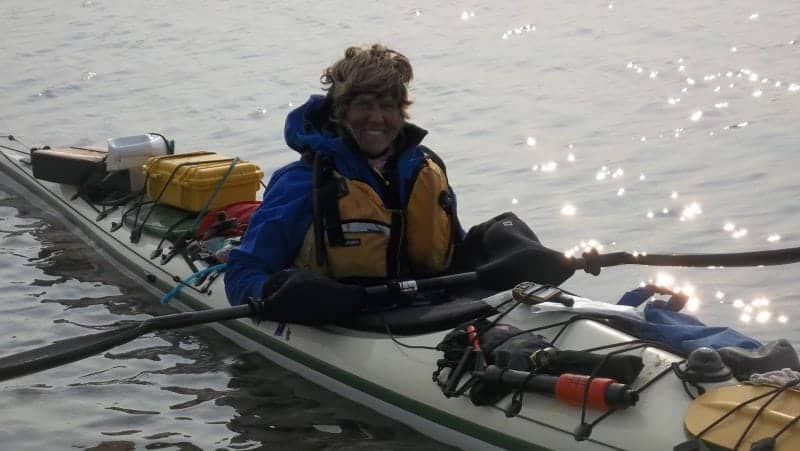For Diane Hache, kayaking to the Northwest Passage from Yellowknife was a personal mission.
"It was my dream," she told Yellowknifer. "I followed my dream. I completed my dream.”
On Aug. 21, the adventurer completed the final leg of her six-year journey from Yellowknife to Gjoa Haven, Nunavut.

photo courtesy of Diane Hache
The idea to take the trip took root many years ago, she said, after reading the book Kabloona in the Yellow Kayak: One Woman's Journey Through the Northwest Passage, about a grandmother who set out from Churchill, Man. to Tuktoyaktuk.
"I read it three times. I studied it," said the 62-year-old. "I thought, if she could do it, I could do it."
In the summer of 2009, Hache embarked on the first leg from Yellowknife to Fort Providence. The next year, taking off from where she finished the previous year, Hache kayaked to Tuktoyaktuk.
At first, she said, her goal was to kayak the Mackenzie River, but Kabloona's story stayed with her, so she made the decision to keep going.
After two years of planning and preparing, she embarked from Tuktoyaktuk destined for Gjoa Haven in 2013. Over the next five years, she spent her summers working her way across the Northwest Passage. The only summer she didn't paddle was last year, because ice conditions didn't make the trip feasible.
The most majestic part of her Arctic journey, she said, were the wildlife encounters.
“Beluga whales came so close to me,” she said. “I could have touched them with my paddle, that's how close they were ... They were swimming around me."
Some mornings, she would wake up to caribou herds grazing about 20 feet away from her.
"I felt secure when the caribou were around, resting," she said. "It meant there were no predators.”
There were grizzlies and polar bears of course, but as far as grizzly bears were concerned, she said they were just of frightened of her as she was of them.
“The bear banger works extremely well," she said.
She said felt lucky to have no encounters with polar bears, which are known to actively hunt humans.
"Lots of seals, caribou, musk ox, wolves," she said. "But, no, I didn't encounter a polar bear."
The experienced kayaker described the trip as a simple "kayak ride," although she said strong winds presented challenges. Sometimes she would be stranded on shore for days.
The wind, coming up from the south, would sometimes bring wildfire smoke with it. She described the water as being covered in a smoky haze at times.
"Up there you are so alone," she said. "It is just unreal. There are thousands and thousands of islands. I probably stepped on islands, for the night, that nobody has ever set foot on - or that's what I thought."
Upon completing her journey in Gjoa Haven on Aug. 21, she said she burst into tears.
“I cried for about a half hour when I looked at the map and realized what I had done,” she said. “It really hit me.”
If others are attempting long-distance trips like hers, she said planning, research and making sure to be fully equipped with all necessities are important.
“You have to rely on food that can be eaten without fire, stuff like that," she said, adding she brought a satellite phone, an advanced GPS system, a Go Spot device, a global positioning system tracking devise that sends an email with location updates, a gun, plenty of food, a drinking water sanitation system, a powerful camping stove, a bear banger and spray and other necessities in case she had to mend her kayak.
"If I did it, everybody can do it," she said. "It's just a matter of putting your mind to it ... The opportunities, the wildlife, the freedom, the spectacular views. I will never forget it."